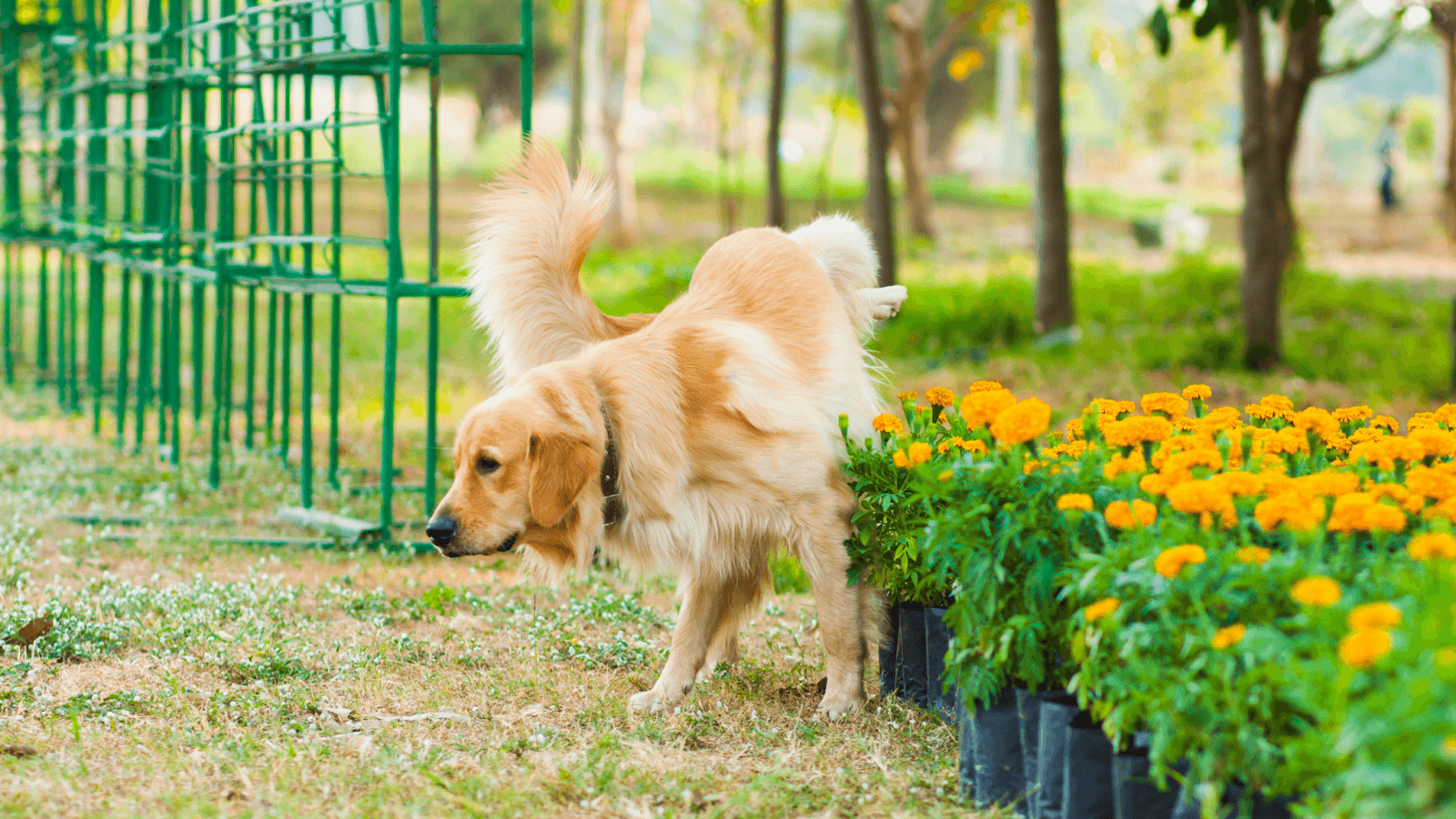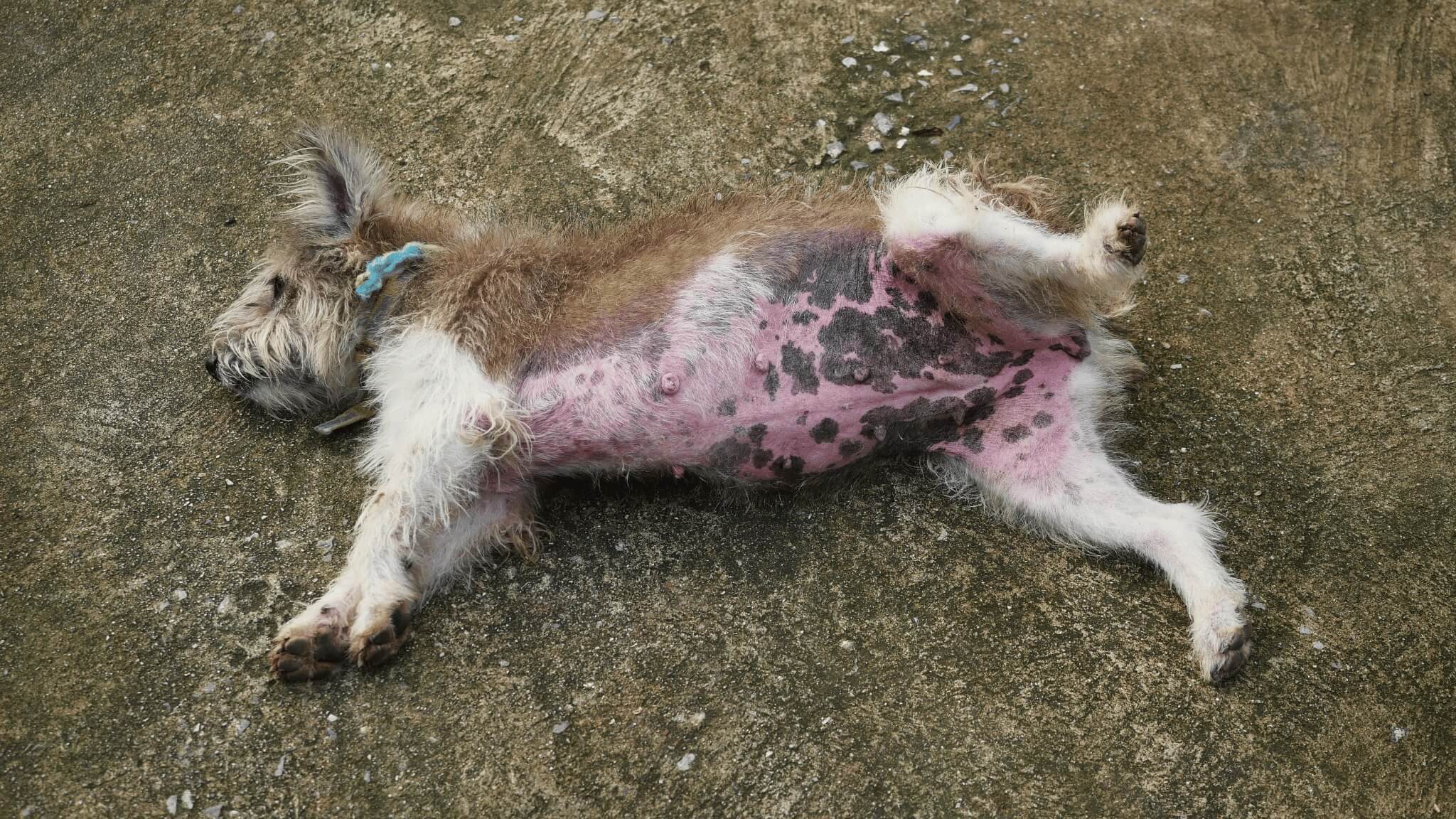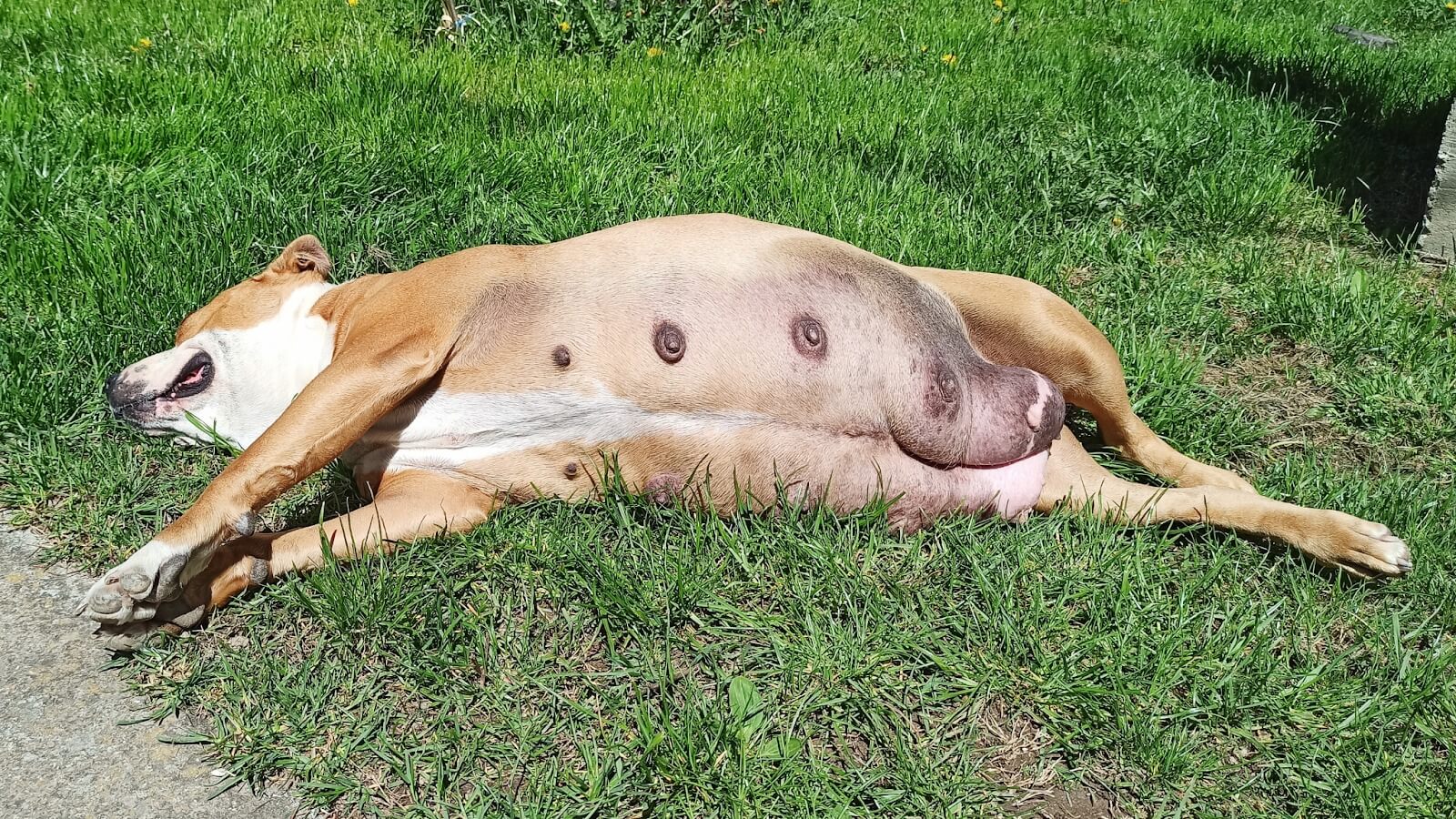If your dog hasn’t peed in 24 hours, it can be a cause for concern. While some dogs may hold their bladder for longer periods, it is not normal for a dog to go an entire day without urinating. There can be several reasons why your dog is not peeing, ranging from medical conditions to behavioral issues.
Most people have encountered the issue of their dogs peeing too much, but not urinating at all may be a new hurdle. While dogs can hold their pee for impressive stretches of time, 24 hours is pushing it a bit. In fact, the same applies if your dog hasn’t peed in 10 hours, 12 hours, 14 hours, 30 hours or two days, then there may be a serious problem to address.
Remember, your dog’s well-being is paramount, and taking a proactive approach to their health is always a good move. Let’s look at why your dog doesn’t want to pee and what you can do about it with the help of scientific sources and veterinary advice from Dr. Dennis Chew, DVM and his colleagues in his work on canine urology.
So, Why Hasn’t My Dog Peed In 24 Hours?
A dog not urinating can be due to behavioral issues such as stress. Health-related causes include pain and weakness, urinary tract infections, kidney stones and diseases, blockages in the urinary system, and spinal cord injuries, which might also lead to a lack of urination. Additionally, external factors like extreme temperatures, dehydration, or medications can affect a dog’s urge to urinate.
You’ve probably dealt with canine constipation and didn’t panic when your dog refused to poop outside. But animals, including us, pee more than they poop, so obviously, your pup refusing to urinate hit the panic button. Dogs naturally pee every 4 to 6 hours, depending on age, size, and health. Not emptying their bladder regularly can be a problem and lead to complications, such as bacterial infections. So if your dog is going more than 6 hours with no signs of peeing, you need to take notice and start looking for the cause.
Overall, it is crucial to pay attention to changes in a dog’s behavior, especially when it comes to urination. If a dog is not urinating or is experiencing pain or weakness, it is important to seek veterinary care promptly.
Recognizing the Signs of Urinary Issues, Anunia, & Urinary Retention in Dogs
When a dog is unable to urinate, it can be a sign of a serious medical condition. Urinary issues, such as anuria or urinary retention, can be caused by a number of factors, including bladder stones, urinary tract infections, or even cancer.
Recognizing the signs of urinary issues in dogs is crucial for early intervention and treatment. Some common signs to look out for include:
- Straining to urinate;
- Frequent attempts to urinate, but only producing small amounts of urine;
- Blood in the urine;
- Licking of the genital area; and
- Inappropriate urination (i.e., accidents in the house).
Anuria, the complete absence of urine production, is a medical emergency and requires immediate veterinary attention. This condition can be caused by a blockage in the urinary tract, which can lead to a buildup of toxins in the body and potentially fatal complications.
12 Possible Reasons Your Dog Hasn’t Peed
It is important to note that holding urine for extended periods of time can be harmful to a dog’s health. If a dog has not peed in a whole day, it is important to consult with a veterinarian to rule out any underlying medical issues.
Here are 13 reasons for your dog not peeing for a whole day.
1. Pain & Weakness
Dogs that are in pain or feeling weak may not be able to urinate. Pain can be caused by various factors, such as arthritis, surgery or injury. After surgery or injury, a dog may find it difficult to get up and go outside to potty.
Studies show that spinal cord injuries are a common cause of urinary retention. In these cases, the dog may try to hold it in as long as possible, which can lead to discomfort and even severe pain.
Extremely weak and sick dogs due to parvo or other severe illnesses may also find it challenging to urinate. These dogs are often too weak to stand up and go outside and may not have the strength to hold themselves up.
In such cases, the dog may still try to hold it in, but eventually, they may not be able to hold it any longer. Other times, the dog may have no choice but to pee on themselves (incontinence).
It is important to note that pain and weakness can be symptoms of underlying health conditions that require medical attention. If a dog is experiencing pain or weakness and is not urinating, it is essential to seek veterinary care immediately. Delaying treatment can lead to further complications and discomfort for the dog.
In some cases, medication may be prescribed to manage pain or weakness, which can help the dog feel more comfortable and regain their strength. Additionally, the veterinarian may recommend changes in the dog’s diet or exercise routine to improve their overall health and well-being.
2. Fear Or Refusing To Leave A Specific Area
Sometimes, a dog may refuse to pee because they are afraid of something outside. For example, if there is another dog barking or growling nearby, a dog may feel too scared to go outside and pee.
In this case, it is important to try to identify the source of fear and remove it if possible. If the fear cannot be removed, it may be necessary to take the dog out on a leash or to a different area to pee.
Another reason a dog may refuse to pee is that they feel safer in a specific area, such as their crate or bed. This may be especially true for dogs that are anxious or fearful. If a dog is reluctant to leave their safe space or even pees on their bed, it may be necessary to coax them out with treats or toys.
In a recent case in my own experience, a man was very sick and bedridden for a while. HIs Bullmastiff, Meg, stayed in his bed during the first 24 hours and simply refused to leave until he finally got up himself. Meg did not pee for the entire 24 hours. When her owner finally got out of bed, so did she and she promptly peed on the floor from having held it in so long.
This is a good example of whether dogs know when people are sick and one reason they may not pee for an extended period because of external circumstances.
In some cases, a dog may refuse to leave a specific area because they are waiting for their owner to return. This may be the case if the owner is sick or injured and the dog wants to stay close by. In this situation, it may be necessary to provide the dog with a comfortable spot near the owner and encourage them to go outside to pee when needed.
3. Kidney Stones
Kidney stones are a common cause of urinary tract obstruction in dogs. They can cause pain and discomfort and, in some cases, can lead to serious complications like kidney damage and infection.
Kidney stones are formed when minerals, such as calcium, oxalate, and uric acid, crystallize in the urine. The crystals can then clump together and form stones of varying sizes. Research shows the exact cause of kidney stones is not always clear, but factors like diet, genetics, and certain medical conditions can increase the risk of their formation.
Symptoms of kidney stones in dogs can include:
- Straining to urinate;
- Painful urination;
- Blood in the urine; and
- Decreased urine output.
In severe cases, kidney stones can cause an obstruction and anuria, which is the complete cessation of urine production. Studies show that 25% of dogs with acute kidney failure experience the condition. This is a potentially fatal medical emergency and requires immediate veterinary attention.
Treatment for kidney stones in dogs depends on the size and location of the stones. Small stones may pass on their own with supportive care like pain management and increased hydration. Larger stones may require surgical removal or a procedure called lithotripsy, which uses shock waves to break up the stones into smaller pieces.
4. Bladder Outlet Obstruction
Bladder outlet obstruction is a condition where there is a blockage in the urethra, the tube that carries urine from the bladder to the outside of the body. This blockage can cause the urine to back up into the bladder, leading to discomfort and pain.
There are several possible causes of bladder outlet obstruction, including:
- Enlarged prostate gland in male dogs;
- Tumors in the urinary tract;
- Urinary stones; and
- Trauma to the urinary tract.
Symptoms of bladder outlet obstruction include difficulty urinating, frequent attempts to urinate with little success, and blood in the urine. In some cases, the dog may also experience abdominal pain and lethargy.
If left untreated, bladder outlet obstruction can lead to serious complications such as urinary tract infections, bladder rupture, and kidney damage. Therefore, it is important to seek veterinary care promptly if your dog is exhibiting any of these symptoms.
Treatment for bladder outlet obstruction may include medications to relieve pain and inflammation, catheterization to drain the bladder, and surgery to remove any obstructions. The specific course of treatment will depend on the underlying cause of the obstruction.
5. Enlarged Prostate Gland
An enlarged prostate gland can cause a dog to have difficulty urinating or even prevent them from urinating altogether. This condition is more common in male dogs and can occur in dogs of any age, but is more common in older dogs.
While commonly associated with neutering, new research shows canine prostate neoplasia may have nothing to do with neutering at all. In fact, neutering has been shown to improve medium survival time in affected dogs.
The prostate gland is a small gland located near the bladder and urethra in male dogs. It produces fluid that helps to nourish and protect the sperm. When the prostate gland becomes enlarged, it can put pressure on the urethra, making it difficult for the dog to urinate.
Some common symptoms of an enlarged prostate gland in dogs include:
- Straining to urinate;
- Frequent attempts to urinate;
- Blood in the urine;
- Painful urination; and
- Licking the genital area excessively.
If left untreated, an enlarged prostate gland can lead to more serious health problems, such as urinary tract infections, bladder stones, and kidney damage.
Treatment for an enlarged prostate gland may include medication to reduce the size of the gland or surgery to remove it. In some cases, a change in diet or lifestyle may also be recommended to help manage the condition.
6. Urinary Tract Infection (UTI)
In some cases, a dog’s inability to urinate may be due to an infection. Urinary tract infections (UTIs) are common in dogs and can cause discomfort and pain, making it difficult for the dog to urinate. UTIs are caused by bacteria that enter the urinary tract and multiply, leading to inflammation and irritation.
However, UTIs are more likely to cause incontinence than urinary retention. But UTIs can cause dogs to strain to pee, with little or no pee actually coming out. Peeing may also be so painful that the dog might avoid peeing at all.
According to Dr. Teh, DVM symptoms of a UTI include frequent urination, straining to urinate, blood in the urine, and a strong odor. If left untreated, a UTI can lead to serious complications, such as kidney damage or bladder stones.
In addition to UTIs, other types of infections can also cause a dog to stop urinating. For example, a bladder infection or kidney infection can lead to similar symptoms. It is important to take your dog to the veterinarian for a proper diagnosis and treatment (antibiotics).
Symptoms of a UTI include frequent urination, straining to urinate, blood in the urine, and a strong odor. If left untreated, a UTI can lead to serious complications, such as kidney damage or bladder stones.
7. Kidney Disease
Kidney disease is a common cause of decreased urine output in dogs. The kidneys play a vital role in filtering waste and excess fluids from the blood, and when they are not functioning properly, urine production can decrease. Kidney disease can be acute or chronic, and it is important to identify it early to prevent further damage.
Symptoms of kidney disease in dogs include decreased urine output, increased thirst, lethargy, vomiting, diarrhea, green pee, and weight loss. If left untreated, kidney disease can progress to kidney failure, which can be fatal.
There are several causes of kidney disease in dogs, including infections, toxins, and genetics, Including kidney damage caused by diabetes. Treatment depends on the underlying cause and may include medication, dietary changes, and supportive care such as fluids and electrolytes.
8. Liver Disease
Liver disease is a possible cause of a dog not urinating. The liver plays a crucial role in removing toxins from the body, and when it is not functioning properly, it can lead to a variety of health issues.
One of the symptoms of liver disease in dogs is a decrease in urine output. This is because the liver is responsible for producing bile, which helps to break down food and remove waste from the body. When the liver is not functioning properly, it can lead to a buildup of toxins in the body, which can cause a decrease in urine output.
There are several different types of liver disease that can affect dogs, including:
- Hepatitis;
- Cirrhosis; and
- Liver cancer.
If you suspect liver disease, your vet can perform blood tests and other diagnostic tests to determine the cause of the problem and develop an appropriate treatment plan. Treatment for liver disease in dogs may include medications, dietary changes, and in some cases, surgery.
9. Heart Failure
One possible cause of a dog not peeing for an extended period of time is heart failure. Heart failure is a condition where the heart is unable to pump blood effectively, leading to a buildup of fluid in the body. This fluid buildup can cause a decrease in urine output, among other symptoms, the worst being fatality.
Heart failure can be caused by a variety of factors, including genetics, age, and underlying medical conditions. Some breeds, such as the Cavalier King Charles Spaniel and the Boxer, are more prone to heart failure than others.
Symptoms of heart failure in dogs can include coughing, difficulty breathing, lethargy, and loss of appetite. If you suspect your dog has heart failure, it’s important to seek veterinary care immediately.
10. Extreme Dehydration
If a dog hasn’t peed in all those hours, it may be a sign of extreme dehydration. Dehydration occurs when the body loses more fluids than it takes in, and it can have serious consequences if left untreated.
Some signs of dehydration in dogs include dry gums, sunken eyes, lethargy, orange pee, and loss of appetite. In severe cases, a dog may experience shock, organ failure, and even death, particularly in instances like parvo.
To treat extreme dehydration, it’s important to take your dog to the vet as soon as possible. The vet may recommend intravenous fluids to rehydrate your dog quickly. In some cases, oral rehydration solutions may be used to replace lost fluids.
It’s important to note that prevention is key when it comes to dehydration. Make sure your dog has access to clean water at all times, especially during hot weather or after exercise. If you suspect your dog is dehydrated, seek medical attention immediately to prevent serious health complications.
11. Autoimmune Disease
Some autoimmune diseases can cause a lack of urination in dogs. Autoimmune diseases occur when the immune system mistakenly attacks healthy cells in the body. In some cases, the immune system can attack the kidneys, leading to kidney damage and decreased urine production.
One example of an autoimmune disease that can affect the kidneys is systemic lupus erythematosus (SLE). SLE is a chronic autoimmune disease that can affect multiple organs in the body, including the kidneys.
Other autoimmune diseases that can affect the kidneys and cause a decrease in urine production include:
- Goodpasture syndrome;
- Wegener’s granulomatosis; and
- Polyarteritis nodosa.
12. Spinal Cord Issues
Spinal cord issues can be a cause of urinary retention in dogs. The spinal cord is responsible for sending signals from the brain to the bladder, which then triggers the muscles to contract and release urine. If there is any damage to the spinal cord, this communication can be disrupted, leading to urinary retention.
One common spinal cord issue that can cause urinary retention is intervertebral disc disease (IVDD). This occurs when the cushioning discs between the vertebrae in the spine rupture or bulge, putting pressure on the spinal cord.
IVDD is most common in small breed dogs, such as Dachshunds, but can occur in any breed. Other spinal cord issues that can cause urinary retention include tumors, trauma, and infection.
Immediate Actions to Take
If your dog hasn’t peed in a long time, it’s important to take immediate action to ensure their health and well-being. Here are some steps you can take:
- Monitor Your Dog: Keep an eye on your dog’s behavior and look for signs of discomfort or pain. If your dog is straining to urinate or appears to be in pain, it’s important to seek veterinary care immediately.
- Offer Water: Make sure your dog has access to plenty of fresh, clean water. Dehydration can worsen the situation and make it more difficult for your dog to urinate.
- Take Your Dog for a Walk: Take your dog for a walk and encourage them to urinate. Walking can help stimulate your dog’s bladder and encourage them to urinate.
- Bladder expressions: Gently and steadily apply pressure to the bladder, moving your fingers from the top to the bottom. This should encourage urine to flow. Applying a warm compress to your dog’s lower abdomen can help stimulate urination. Use a clean, damp towel or cloth and apply gentle pressure for a few minutes.
- Consider a Vet Visit: If your dog still hasn’t urinated after trying these steps, it’s important to seek veterinary care. A veterinarian can perform a physical exam and run diagnostic tests to determine the underlying cause of the issue and management of the urinary retention.
When to Seek Veterinary Help
While it’s not uncommon for dogs to skip a pee or two, prolonged periods without urination can be a sign of serious complications. Here are some signs to watch out for and when to seek emergency veterinary help.
Signs of Serious Complications
If your dog has not peed in 24 hours and is exhibiting any of the following signs, it’s time to seek veterinary help:
- Lethargy or weakness;
- Loss of appetite;
- Vomiting or diarrhea;
- Pain or discomfort when trying to urinate;
- Swollen or painful abdomen; and
- Unusual panting or breathing.
These symptoms could indicate a urinary tract infection, bladder stones, or even a life-threatening condition like kidney failure.
Emergency Situations
If your dog has not peed in an entire day and is exhibiting any of the following signs, it’s important to seek emergency veterinary help immediately:
- Straining to urinate without producing any urine;
- Blood in urine;
- Seizures or collapse;
- Difficulty breathing; and
- Unconsciousness.
These symptoms could indicate a blockage in the urinary tract, which can quickly become life-threatening if left untreated. It’s important to seek emergency veterinary help as soon as possible to prevent serious complications or even death.
Preventing Future Urinary Issues
Regular Vet Check-ups
They can also perform a urinalysis to check for any signs of infection or other issues. Catching any potential problems early on can help prevent more serious issues down the line.
Proper Hydration and Diet
Some foods and supplements may also be beneficial for urinary health. Cranberries, for example, are often recommended for their potential to prevent urinary tract infections. However, dog cranberry research is limited at the moment, but still hopeful.
Frequently Asked Questions (FAQs)
How long can a dog go without peeing?
What are the possible causes of a dog not urinating?
Why is my dog not peeing in the morning?
What are the signs that my dog needs to pee?
What can I do to help my dog pee if they haven’t gone in 24 hours?
Is it normal for a dog not to pee for a whole day?
Final Thoughts
It is not uncommon for dogs to skip a day or two without urinating. However, if the dog has not peed in 24 hours or more, it is important to monitor their behavior and take medical action if necessary. There are several reasons why a dog may not be urinating, including dehydration, urinary tract infection, bladder stones, or kidney problems.










